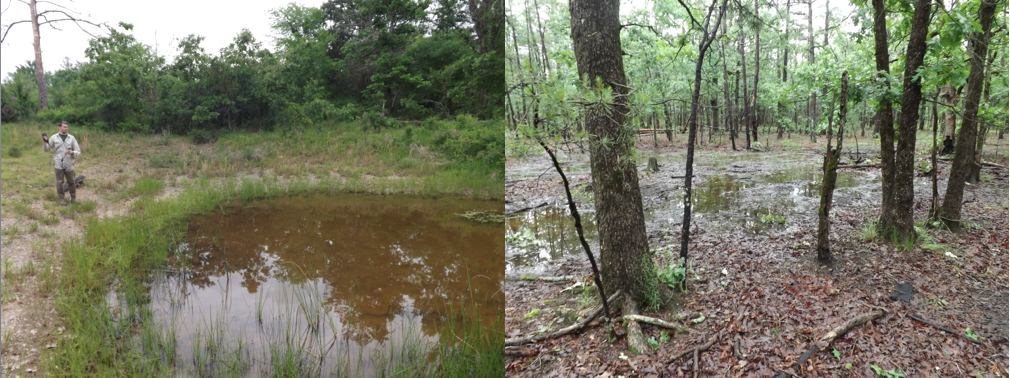
|
| Continuing work from summer 2012, graduate student Brent Fetting (MS student) and his technician, Joe Webber (an OSU zoology major and Freshman Research Scholar), surveyed man-made ponds and natural wetlands in the Ouachita National Forest near Broken Bow in McCurtain County, OK, to determine what amphibians were utilizing the habitats for breeding. They also gathered habitat data to further explore what habitat characteristics amphibians maybe be associated with in the region. Brent also presented last summer's data at the 2013 Joint Meeting of Ichthyologists and Herpetologists in Albuquerque, NM, in July. The data Brent has gathered over the past 2 summers is helping him better understand what impacts man-made ponds in the region are having on amphibian populations, which have suffered declines worldwide over the past few decades. Brent is also convinced he had at least two encounters with the elusive Bigfoot rumored to roam the mountains of southeast Oklahoma. |
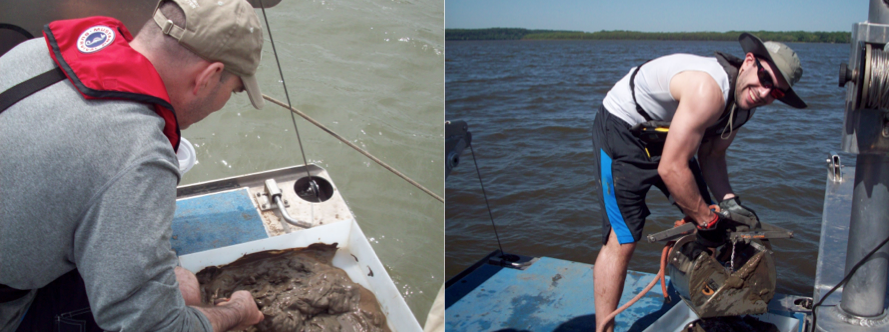
|
| Dr. Jason Belden and Shane Morrison (PhD student) worked in collaboration with the Grand River Dam Authority (GRDA) to collect and analyze sediment samples from the northern tributaries of Grand Lake O' the Cherokees for trace metal contamination. These efforts are the beginning of a project aimed at mapping metal concentrations across the lake and evaluating how changes in water chemistry influence toxicity and bioaccumulation. |
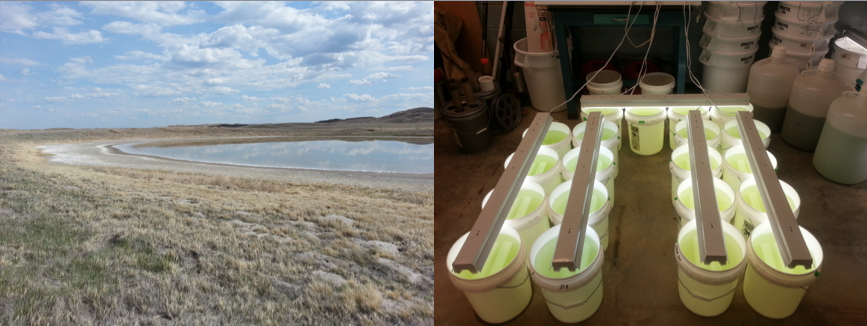
|
| Bill Maubach (PhD studet) investigated hypersaline, hypereutrophic, ephemeral pools in the Nebraska Sandhills that are home to a rare species of fairy shrimp and covered by cyanobacterial mats. In addition, he conducted a project studying the effects of clam shrimp pests on zooplankton communities in fish rearing ponds. |
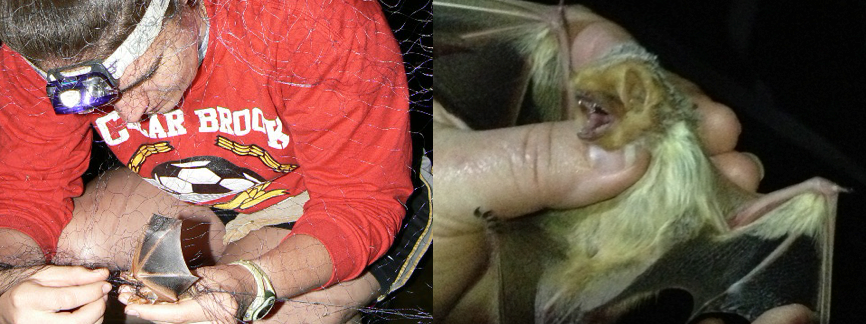
|
| This summer has served as the second field season for Rachel Eguren's (MS student) project focusing on the impacts that metals (lead, zinc and cadmium) have on bat communities. She undertook netting trips to Tar Creek Superfund Site located in northeastern Oklahoma and to a reference site once each month from May through September. For her research, animals collected during this study will be analyzed for metal levels as well as behavioral assays to assess maneuverability and willingness to fly. Two undergraduate students, Tara Blasier (Wentz Scholar) and Ashley Graupman (Niblack Scholar) will also be using the animals collected from this study for their independent projects in Dr. Karen McBee’s lab. |
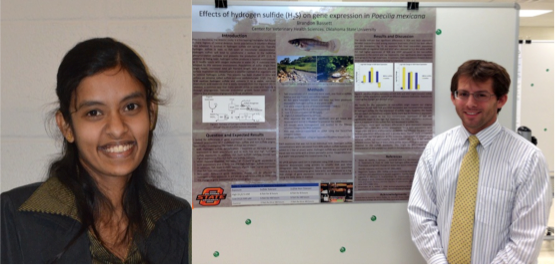
|
| Chathurika Ruchirani, a new Ph.D. student in Dr. Jennifer Shaw’s lab, began a collaborative project this summer with Dr. Michi Tobler’s lab. Chathurika’s preliminary data are an important step toward an integrative approach to better understand sulfide metabolism across species. With the help of Brandon Bassett, a participant in the Summer Research Training Program through OSU's School of Veterinary Sciences, Chathurika has identified changes in gene expression in a sulfide tolerant fish model, which will be used to pose mechanistic questions regarding sulfide signaling in human coronary vascular cells in culture. Hydrogen sulfide has gained widespread attention in cardiovascular biology and pharmacology for its pro-angiogenic, anti-oxidant and anti-inflammatory properties. |
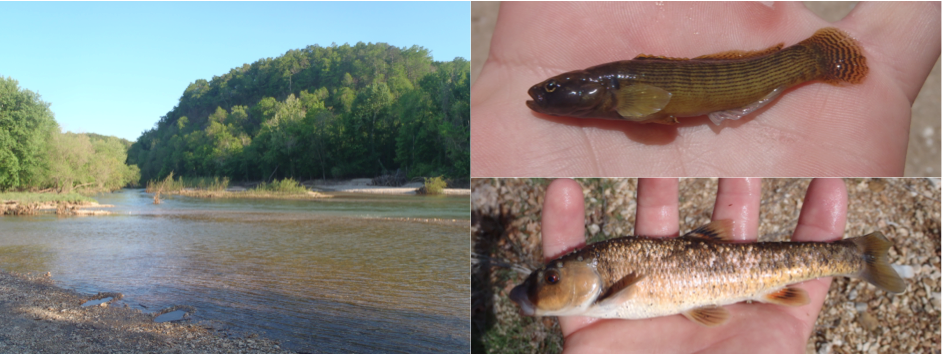
|
| Graduate students Reid Morehouse and Garrett Hopper sampled stream fish communities in the Ozark Plateau region of Oklahoma. They were investigating the current status of endangered species of stream fishes and crayfishes. |
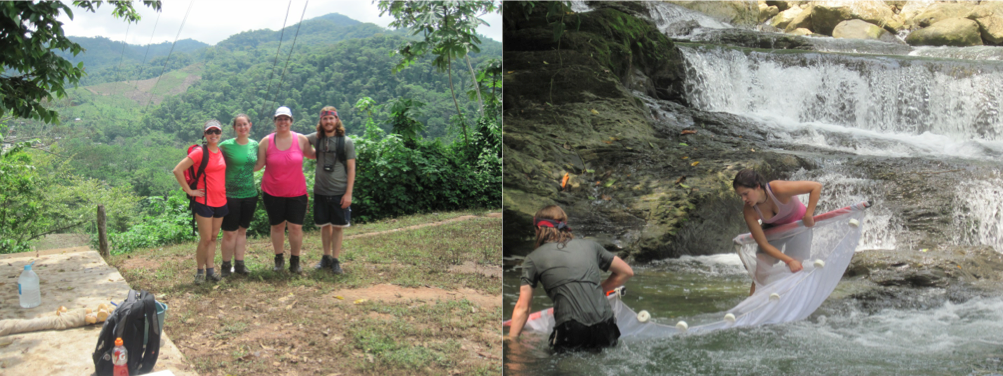
|
| The nature of research in the Tobler lab involves regular trips to Tabasco, Mexico to collect specimens and data for research on the ecology and evolution of extremophile fishes. Often we work together cooperatively to gather data for each other’s projects. Ryan Greenway, an undergraduate in the Tobler lab, is currently working on a project documenting the ecological characteristics of the study sites we commonly use. In these pictures, you see graduate students Courtney Passow, Tess Doumas and Danielle Alba aiding him in collecting data on environmental variables as well as fish and invertebrate community structure. Our work in extreme environments (sulfidic springs and caves) brought us on some beautiful hikes in the Chiapas mountains. We stayed busy dancing off fire ants and climbing in and out of cave shafts, but occasionally we’ll ask a local for a group photo. |
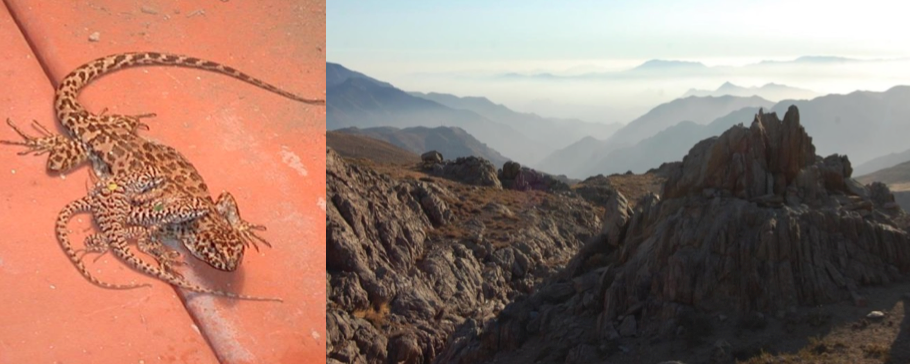
|
| Zoology professor Stanley Fox and doctoral student Enrique Santoyo-Brito returned to campus the first of May after spending five months in the Andes of central Chile studying the social behavior of a long-lived, viviparous, high-elevation lizard, Liolaemus leopardinus. This species lives in colonies on rocky outcrops and individuals take shelter in deep crevices along steep cliffs. Groups are composed of relatives and non-relatives and all age classes. Missing from the groups, however, are newborns, and Fox and Santoyo Brito, under financial support from The National Geographic Society and the Delta Foundation, sought out newborns and followed them. They discovered and filmed several births under flat rocks in habitats different from the places where the large groups congregate. Mothers give parental care for a few days, then leave their offspring to fend for themselves for the winter. Babies do not move much and spend most of their time before winter arrives in a torpid state below small flat rocks, very different than the older age classes. By next summer, these newborns, now 8-9-months old, have joined their parents in larger groups and the group members protect one another from possible predators. Fox will return to the site in early austral spring to see if the older newborns have by that time joined the larger groups, and are associating with their parents. |
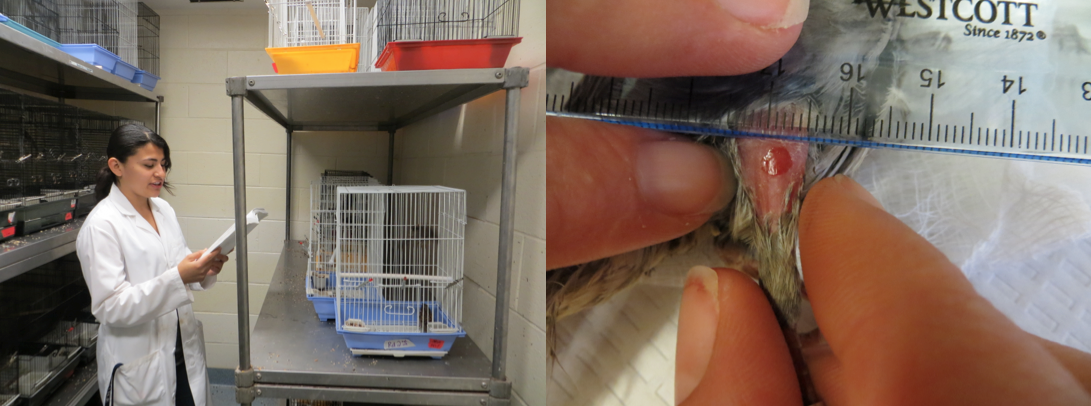
|
| Dr. Sarah DuRant and NSF REU student, Maria Arciniega, researched the interactions between stress and wound healing. The researchers manipulated endogenous levels of a common stress hormone, corticosterone, in the House Sparrow, while simultaneously exposing birds to a series of stressors. Their research will help elucidate the role of corticosterone, relative to other physiological effects of stress on the immune system. This work was done at Tufts University in collaboration with Dr. Michael Romero and PhD candidate Carolyn Bauer. |
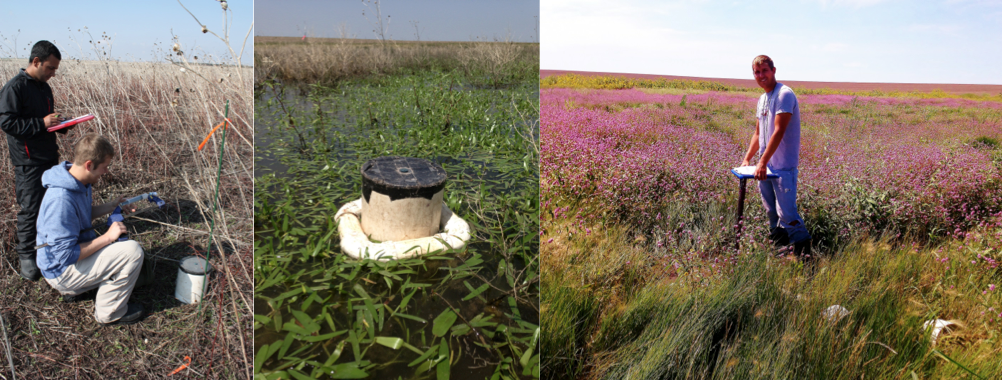
|
| As part of a two year project, Dale Daniel (PhD student) and technician Raju Katwal conducted a wetland greenhouse gas emissions study in the Rainwater Basin and western High Plains regions of Nebraska. Data gathered from this project has provided important insight to the effects of surrounding land use and wetland management practices on playa wetland greenhouse gas emissions. This project is a collaboration among Oklahoma State University scientists, the Environmental Protection Agency, the U.S. Geological Survey at Northern Prairie Wildlife Research Center, and the Nebraska Games and Parks Commission. |

|
| Matt Bolek spent three weeks collecting hairworms (nematomorpha) in Argentina as part of their current NSF proposal on the biodiversity of hairworms in the New World. Matt was hosted in Argentina by Dr. Cristina De Villalobos and her students at the Universidad Nacional de La Plata and the Universidad Nacional de Catamarca. Matt and Argentinean and German team members collecting worms in Quebrada del Condorito National Park, Argentina. The nematomorph team working through the night processing samples in Dr. Liliana Salas’ laboratory at the Universidad Nacional de Catamarca. |
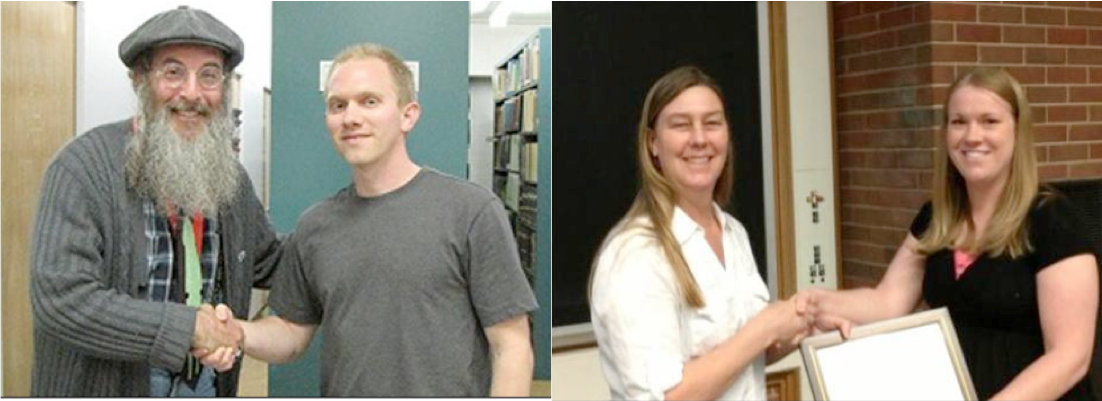
|
| Kyle Gustafson, Heather Stigge, Ryan Shannon, and Matt Bolek presented their research at the Southwestern Association of Parasitologists (SWAP) meeting at the University of Oklahoma Biological Station, at the Annual Midwestern Conference of Parasitologists (AMCOP) at Perdue University, and at the American Society of Parasitologists (ASP) in Quebec City, Canada. Kyle Gustafson received the prestigious David A. Becker Memorial award for the best oral presentation by a graduate student for his talk at SWAP. Heather received both the prestigious Herrick Award for the best poster presentation at AMCOP and the Outstanding Student Presentation Award for the best platform presentation at ASP. |
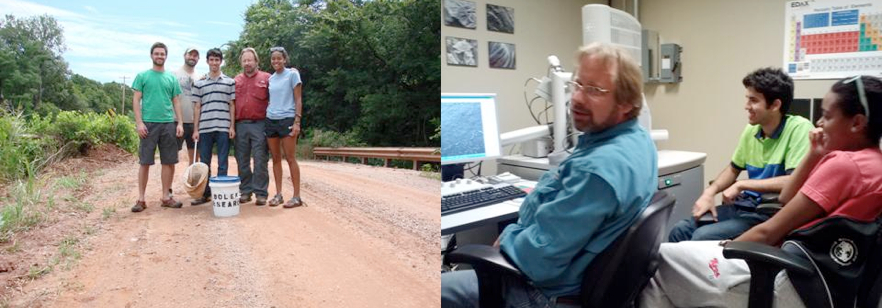
|
| Dr. Gabe Langford and undergraduate students Jasmine Childress and Triantofilos Iakovids from Florida Southern College spent a week in the Bolek laboratory conducting research on hairworms. Their visit was part of a NSF Research Opportunity Award awarded to Matthew Bolek and Gabe Langford to study a new species of hairworm, which parasitizes larval dragonflies. The team spent the week collecting and examining snails for hairworm cysts, spending quality time on the Scanning Electron Microscope (SEM) and visiting local Oklahoma museums. The pictures show Ryan Shannon (from the Bolek lab and veteran snail collector), Gabe, Triantofilos, Matt and Jasmine in the field collect snails in Payne Co., Oklahoma; Matt and students on the SEM. |
| |
| |
| |













